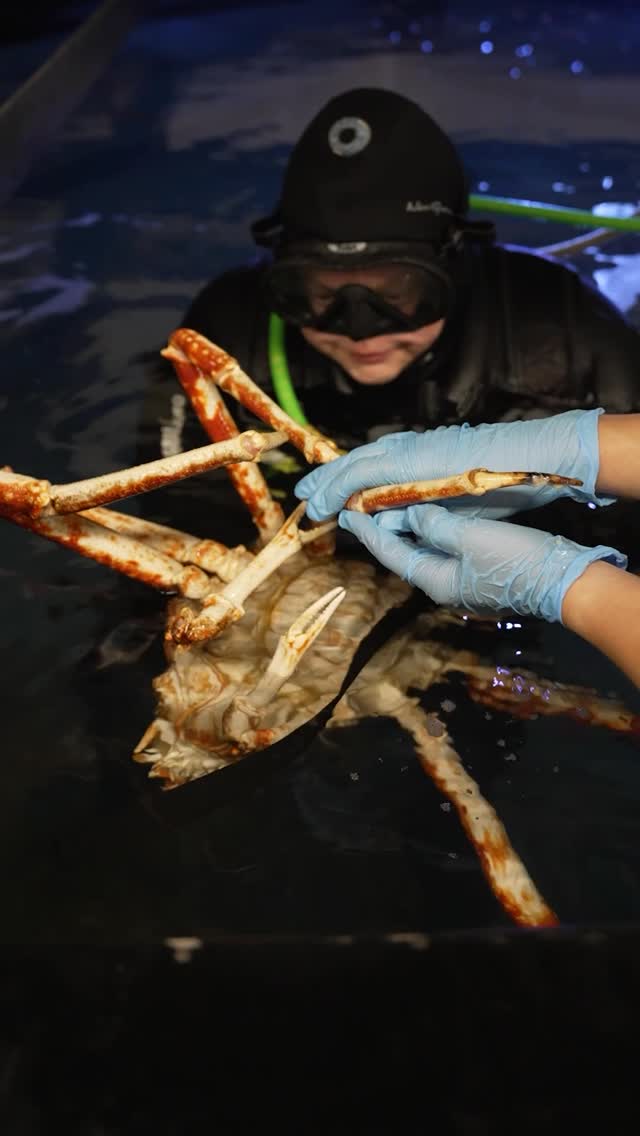- The biology and anatomy of Japanese spider crabs
- The process and importance of molting in crustaceans
- Treatment methodologies for injuries in crustaceans
- The role of laser therapy and antibiotic gel in veterinary care
- Conservation efforts and habitat preservation for Japanese spider crabs
The Japanese spider crab (Macrocheira kaempferi) is an extraordinary species known for its large size and unique features. With a leg span that can reach up to 12 feet, this crustacean is not only one of the largest in the world but also a captivating example of marine life. Understanding the biology and anatomy of this species sheds light on its adaptability and survival strategies in the vast ocean.
The Japanese spider crab has a long, spindly body and features a hard, protective exoskeleton. Its limbs are exceptionally long, facilitating movement in its underwater habitat. Despite this impressive size, Japanese spider crabs are not fierce predators. Rather, they are scavengers, primarily feeding on the remains of dead animals, seaweed, and other organic materials found on the ocean floor. Their diet contributes to the ecosystem by breaking down organic matter and ensuring nutrient recycling.
The intricacies of their anatomy are further showcased during their unique molting process. Crustaceans, including the Japanese spider crab, must periodically shed their exoskeletons to grow. This process, known as molting, allows them to remove damaged or worn-out shells and regenerate new ones. The molting cycle is critical for their overall health, as it can help promote healing from injuries. In the case of our Japanese spider crab, we are providing care while it prepares for its upcoming molt, which will aid in the recovery from a small lesion on its limb.
Molting begins with the crab secreting enzymes that soften its hard exoskeleton. It then absorbs water, causing its body to swell and break free from the old shell. Once free, the crab is vulnerable until the new shell hardens. During this phase, it is essential that the crab is in a safe environment to minimize the risk of predation. This natural healing process exemplifies how vital the molting stage is for growth and recovery.
In our care of the Japanese spider crab, we are using innovative treatment methodologies to address its injury. Laser therapy has emerged as an advanced technique in veterinary medicine for various animals, including crustaceans. This non-invasive approach applies focused light on the affected area to stimulate tissue regeneration and reduce inflammation. The safety and gentleness of laser therapy make it ideal for treating injuries in delicate creatures like the Japanese spider crab.
In addition to laser therapy, we are also applying antibiotic gel to the lesion. This gel helps combat potential infections while promoting healing. Antibiotic treatment is crucial in preventing secondary infections that could complicate recovery. The dual approach of combining laser therapy with antibiotic gel offers a comprehensive treatment plan that supports the health of the crab while it prepares for molting.
The intersection of veterinary care and conservation efforts plays a significant role in protecting species like the Japanese spider crab. Natural habitats for these crabs are increasingly under threat due to pollution, overfishing, and climate change. Conservation initiatives focused on habitat preservation aim to safeguard these remarkable creatures. Efforts include raising awareness about responsible fishing practices and advocating for marine protected areas where the crabs can thrive without human interference.
Japanese spider crabs are an integral part of their ecosystems, and protecting their habitats is essential for maintaining ecological balance. As we treat our crab, we are also reminded of the importance of stewardship and conservation. Education on sustainable practices can help mitigate the impacts of human activities on marine life. Every action counts, from reducing plastic waste to supporting local conservation organizations.
Fostering public interest in the care and conservation of species like the Japanese spider crab is crucial. Zoos and aquariums can be platforms for education, providing visitors with knowledge about marine biology, injury treatment practices, and the ongoing need for habitat protection. Informative exhibits can showcase the life cycle of crustaceans, the challenges they face in the wild, and the innovative treatments we offer to enhance their well-being.
Laser therapy and antibiotic treatments are part of an essential toolkit in marine veterinary care. By understanding how to care effectively for injured marine creatures, we can contribute to their recovery and, ultimately, their survival in increasingly challenging environments. Education and conservation efforts go hand in hand with these medical practices, ensuring that we not only address individual injuries but also promote species health at larger scales.
The interdisciplinary approach combining biological knowledge, veterinary expertise, and conservation advocacy is vital in the combat against species decline. By investing time in learning about the challenges facing marine life, including species like the Japanese spider crab, we better equip ourselves to make informed choices that benefit the environment.
As we support our Japanese spider crab on its healing journey, we provide a chance for recovery that will enable it to eventually resume its natural behaviors. Molting is a significant milestone in this process, allowing for the regeneration necessary for a full return to health. With continued observation and care, we can facilitate this stage in the crabs’ life cycle.
Furthermore, understanding the impact of environmental stressors on crustaceans is vital. Factors such as water temperature changes, pollution, and habitat degradation can impair their health and reproductive success. This knowledge reinforces the necessity for collaborative conservation efforts that engage multiple stakeholders, including scientists, policymakers, and the public.
As we progress in our treatment and support of the Japanese spider crab, it is paramount to remember that it represents a species that, like many others, plays a crucial role in our oceans’ ecosystems. Fostering biodiversity is necessary to ensure resilience in marine environments. Protecting such species demands a commitment to sustainable practices and proactive conservation measures.
By emphasizing the significance of our efforts in treating the crab and understanding its biology, we join a larger movement focused on promoting marine conservation. This integrated perspective highlights the interconnectedness of animal care, ecological integrity, and community engagement, illustrating how we can collectively work toward preserving our planet’s vital resources.
The journey of our Japanese spider crab as it undergoes treatment for its lesion is not merely a medical case study; it is a testament to the power of compassion and informed action. Each step we take in caring for animals like this crab reinforces a broader commitment to thriving ecosystems and the myriad of species that depend on them.
In the end, the health of individual animals mirrors the health of the entire marine environment, making our responsibilities as stewards of nature increasingly significant. By sharing our insights and experiences in animal care and conservation, we can inspire others to engage actively in the preservation of both common and rare marine species, ensuring that the wonders of the ocean remain for future generations to admire and protect.
*****
Source Description
We’re treating one of our Japanese spider crabs for a small lesion on its limb using laser therapy and antibiotic gel—both safe and gentle options. These incredible animals shed their shells (a process called molting), which often helps heal injuries, and we’re supporting this crab until it’s ready to do just that!


